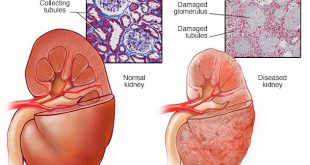Introduction
Keeping track of blood sugar levels is the most important step in knowing whether the patient’s diabetes is under control. HbA1c is one of the tests doctors use to monitor diabetes control. Although HbA1c holds the promise of more efficient patient care and improved management of diabetes, it is not a reliable form of assessing glycemic control in patients with End-stage Kidney Disease who are on dialysis.
What is HbA1c? Why is it an inaccurate marker in diabetic patients on dialysis?
Haemoglobin molecules make up the red blood cells in the bloodstream. When glucose sticks to these molecules it forms a glycosylated haemoglobin molecule, also known as A1c and HbA1c. The more glucose found in the blood the more glycated haemoglobin (HbA1c) will be present.
Since haemoglobin molecules usually have an average survival period of 120 days, the levels of HbA1c usually reflect the control of blood sugar levels over a period of 4 weeks to 3 months prior to the test. However in patients who are on dialysis, the lifespan of red blood cells is shorter. Hence, the HbA1c usually overestimates blood sugar control. Iron and erythropoietin treatment can also cause a significant fall in HbA1c values without an actual change in glycemic control in patients with DM and CKD.
What is the Target HbA1c?
Good control of your blood sugar levels is important . Even a small decrease in the HbA1c lowers the risk of diabetes-related complications such as damage to the eyes, kidneys,and blood vessels.
- For non-diabetics, the usual HbA1C reading is 4-5.9%.
- For people with diabetes, a HbA1c level of less than 6.5% is considered good control.
- For people with diabetic nephropathy, an HbA1c of 7% or less is aimed for.
The A1c target should be individualised. It should be set at higher levels for :
- People who are older
- Those who have conditions that increase the risks of developing low blood sugar levels ( “hypo’s”) , e.g people with advanced CKD
- Those who have increased risks associated with low blood sugar levels (hypoglycemia), e.g people with heart conditions
Since HbAIc is not an optimal marker for blood sugar control in patients on dialysis, what alternative measurements we can use?
Regular measurements of glucose levels,for example, finger-prick testing will provide a more accurate assessment of blood sugar control.
Glycated albumin (GA) is a marker currently under investigation. It measures the amount of blood sugar that has reacted with albumin and reflects blood sugar control over the previous three to four weeks. However, it is not yet available for use in clinical practice.
References
- Diabetes co.uk website
- Balance Magazine, January – February 2010
- UpToDate November 2012
- Malaysian Clinical Practice Guideline: Management of Type 2 Diabetes Mellitus May 2009 (4th Edition)
- Malaysian Clinical Practice Guidelines on Management of CKD in Adults 2011
| Last Reviewed | : | 3 May 2016 |
| Writer | : | Dr. Shahnaz Shah Firdaus Khan |
| Accreditor | : | Dr. Sunita Bavanandan |
 PENDIDIKAN PESAKIT Kementerian Kesihatan Malaysia
PENDIDIKAN PESAKIT Kementerian Kesihatan Malaysia
